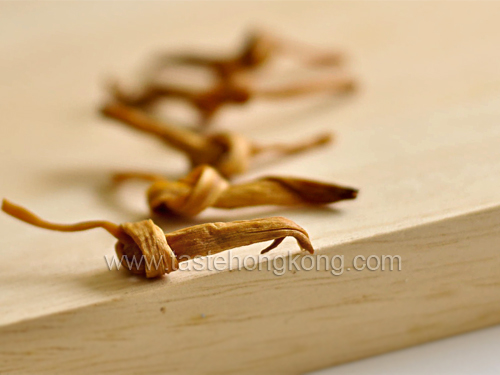
Although it has the word vegetable in its name, it is not vegetable but is the edible species of a flower’s bud. In Hong Kong, we call it gum jum choi (written as 金針菜 in Chinese), literally golden needle vegetable. In mainland China, it is more commonly known as yellow flower vegetable (pronounces as huang hua cai 黃花菜 in mandarin). On Wikipedia, I notice that this yellow flower is called daylily.
Although not mentioned in Wikipedia, it has got another remarkable name in Chinese, that is 忘憂菜, meaning forget-the-sadness vegetable. An interesting name though, I have not found an authoritative source that proved it would help depress unhappiness.
But it has been said that dried golden needle vegetable contains rich lecithin, a phospholipid, which is good for cerebrum cells. Thus it is also said to be a ‘good brain food’.
Whichever is the name, this vegetable is usually available in dried form than fresh, and it has been said that fresh ones are toxic if not well-cooked.
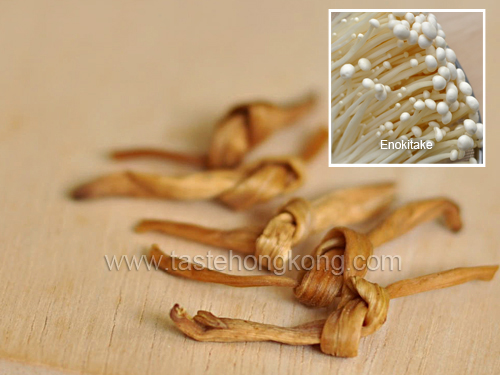
Golden needle vegetables versus golden needle mushrooms
They may sound similar because they are both nicknamed as golden needle. So when you see or hear the mention of golden needle or gold needle in a recipe, do try to clarify. Golden needle mushroom, as the name suggested, is a thin and pearl looking mushroom called enokitake but is different from golden needle vegetable.
Availability
In Hong Kong, dried golden needle vegetables are available all seasons in grocery stores selling Chinese cooking ingredients, specialty stores selling dried sea foods, and in some supermarkets. As for the fresh ones, I only see them a couple of times during winter in the fresh vegetable market.
Rehydration
Like most dried foods, dried golden needle vegetables need to be steeped in water before use. I usually soak them for about half an hour to one, after which dirts will easily be released from the dried flowers. But it is still better to rinse them under running water after steeping and before squeezing excess water from them. Do take note that the dried flowers will lose its flavor to the water if they are soaked for too long.
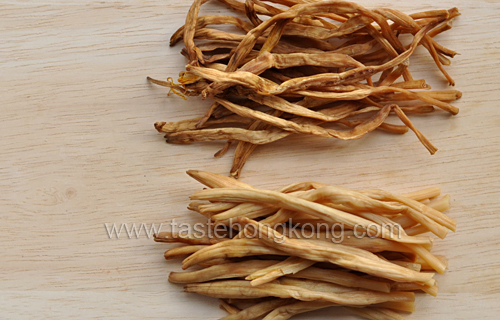
Price
The prices of produces imported from mainland China have been climbing recently due to the rising rate of RMB and drought in some of her provinces. Despite of such, the imported dried golden needle vegetables is still a pretty affordable ingredient, which we may buy at about HKD2 per tael (about 40g). I usually buy 4 to 8 taels in one purchase for consumptions of about half a year.
Storage
I either wrap dried golden needle vegetables in a plastic bag or in a box and store in fridge. They are supple but will turn stiff after after residing in fridge for a day or so. That is why I always like to cut off harder ends (about half a centimeter) before chilling, when they are still easier to be shaped and aligned for cutting.
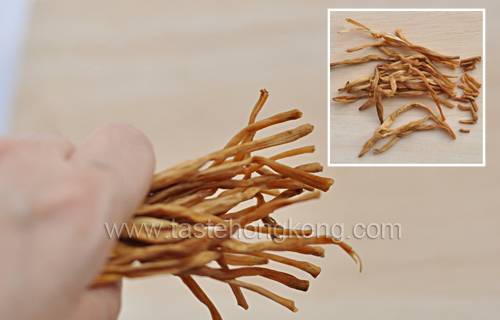
Cooking
I like cooking dried golden needle vegetables by stir frying, by boiling. When the vegetables are boiled in water or liquid for about 10 to 15 minutes, their petals will start to split and color the water in golden yellow. One way to avoid them from splitting apart and lose too much flavor into the liquid is to tie each of them into a knob as shown in the top pictures, but it is just one of the many ways to knob them. Fact is, they may even be used as strings for tying some foods.
In Chinese cuisine, golden needle vegetables is often paired together with cloud ear. And I have just cooked both of them together for a dish called ‘Moo Shu Pork (木須肉)’, hopefully I shall organize the recipe soon and share it with you here (posted on 2010 Jun 5). How do you like cooking with this vegetables, or this dried flowers?
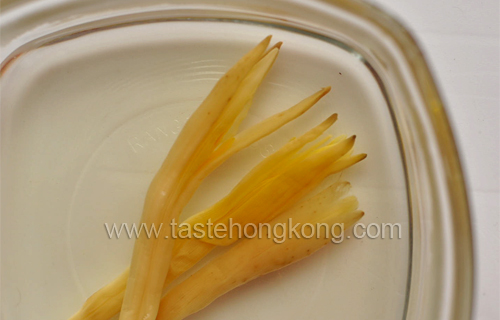
To get immediate updates and new recipes from my blog, you may also SUBSCRIBE them via RSS feeds. See you there.
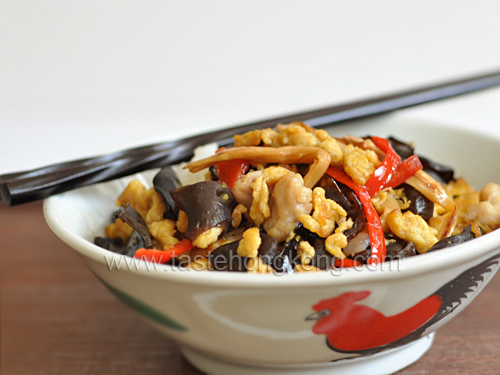
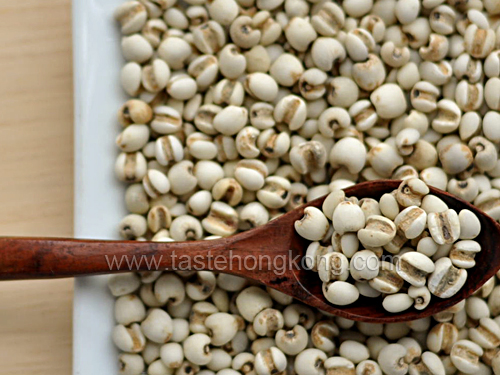
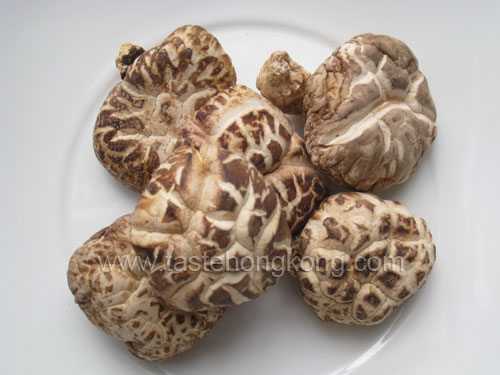
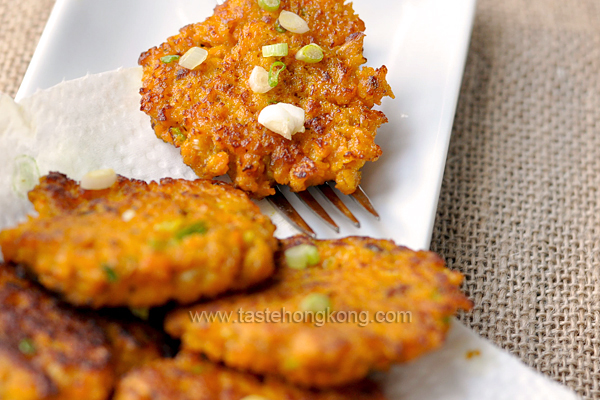
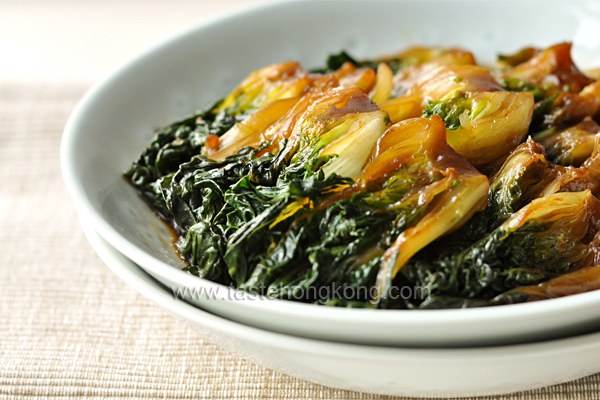
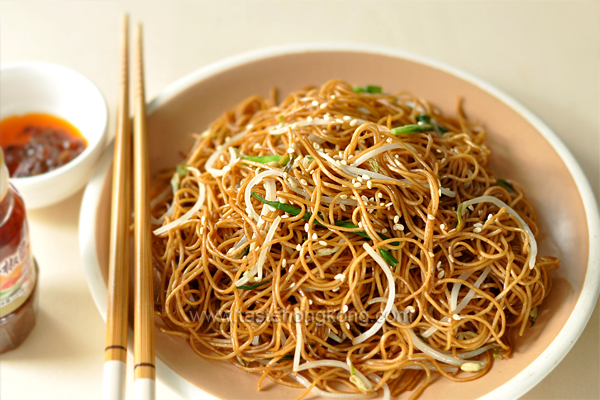
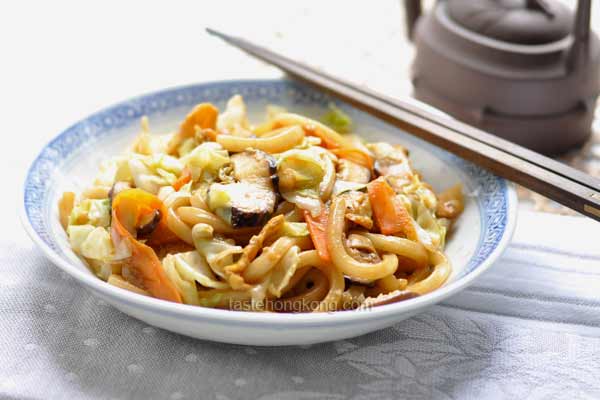
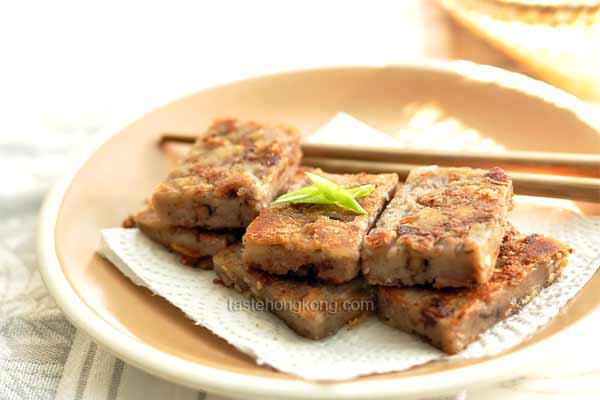
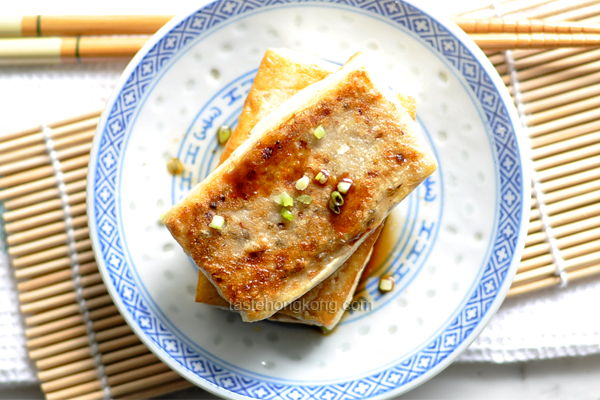
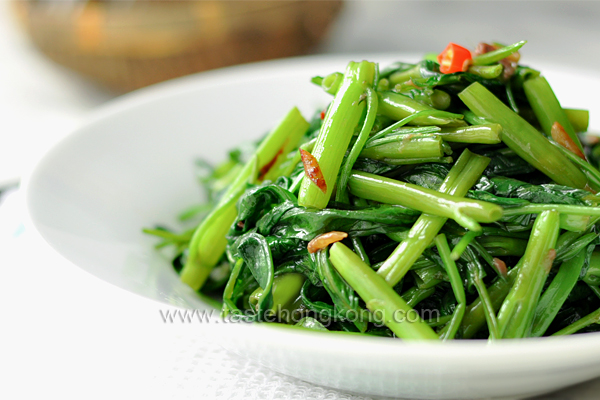
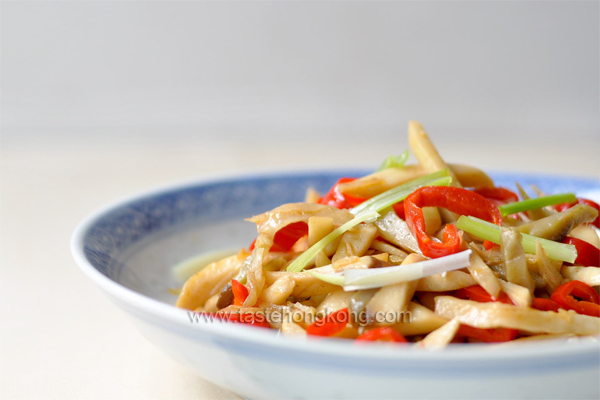



I too like to tie them up to make stir-fry. Beautiful pictures!
Fresh 金針菜 has been popular in Japan over recent years, but 忘憂菜 is a new veg to me. Maybe, I need it daily for the therapeutic effect as the name suggests 🙂 Thanks for your interesting post as always!
I have this before but can’t remember what dish. And always dried version.
A fascinating product! I haven’t heard of this before, great to learn!
My sister and I always fight for those flowers that were stuff inside a roasted duck that we get from a BBQ store since they have been soaked up all the yummy juice/fat.
忘憂菜 – it is the first time I am hearing this. Very interesting.
I usually use this veg/flower in Chap Chye (Braised Vegetables – cabbage, glass noodles,mushrooms).
You always have such great information on your blog. I just love your photos.
What a beautiful and exotic ingredient. I’ve never seen it before, but if i ever come across it, I would love to try it.
I haven’t had these for a while…my mom used to use a lot in her cooking…
I am not sure whether I have ever had golden need vegetable. I have seen them in the Korean markets around here, but have never been sure how to use them. I look forward to reading more about your recipes for the golden needle vegetable. And as always, your photos are incredible!
Thanks for your informative post. Now I know more about this ingredient – usually only see it in chap chye and often wondered what it is. And I love the Chinese name 忘憂菜 – have a romantic feel to the name
Thank you for posting this information, I had not thought of them in a long time 🙂 Love their texture… My mom also calls these 金針 in Mandarin, perhaps because we’re from Taiwan and not from the mainland? I only know of the combination with cloud ear or with pork, are there any others that you know of?
@Chinoiseries,
Speaking of the Chinese name of Golden Needle Vegetable, colloquially, we also call it 金針 here in HK. In the mainland, my impression suggests that it is more often named as 黃花菜.
In addition to stir-frying this golden needle vegetable with cloud ear and pork (i.e. Moo Shu Pork), I also used to cook it with chicken, beef shank by stewing in a clay pot, but mostly during winters. Hope I could share these with you soon.
[…] they usually tied it into knots. After some resourceful googling on Muimui’s part we hit on this blog which has a good description of it and a link to the Wikipedia entry (apparently in English it is […]
I just boiled a few of the dried flowers in water for about 20 minutes without soaking them first, and they tasted fine. Nice crisp texture. Very flavorful.
And I feel pretty happy.
@Paul,
I see. As long as the dirts are washed away, we could vary the soaking time or boiling time to make it crispier. Thanks for sharing.
[…] Golden Needle Vegetable | Hong Kong Food Blog with Recipes … […]
[…] Gold Needle Vegetable […]
[…] Golden needle vegetable | hong kong food blog with recipes […]
Here in the USA, I’ve collected and cooked daylily as a wild food source, and currently have some growing in my garden. They’re a summer treat that my family enjoys sautéed in butter or battered and fried – they taste like green beans without the bitterness.
Sadly it is not a dish I can easily recommend to friends because of the common name here – daylily. Although it is not a true lily, there is always the concern that a friend will mistake a true lily for a daylily, and of course all true lilies are toxic. I’m sure that if we called it “Golden Needle plant” in the states, I would not have this concern.
[…] Cloud ear or Wood ear (mu er 木耳) is an edible fungus used primarily in Asian cuisine. This is sold dried and need to be soaked before use. While almost tasteless, it is prized for its slightly crunchy texture.Golden needle vegetable (gum jum 金针in Cantonese) is actually daylily refer to Wiki. You can also read more details from Taste HongKong.*********** […]